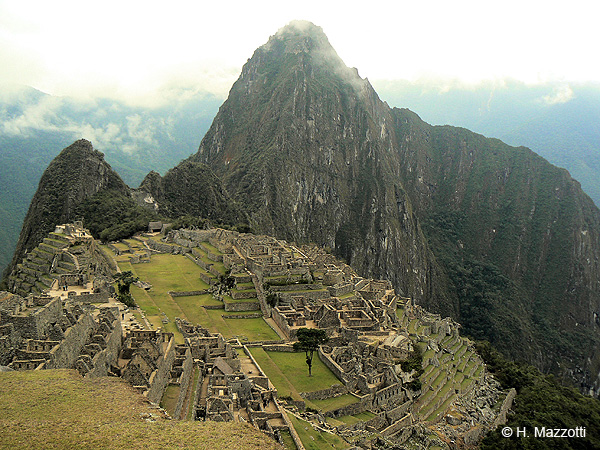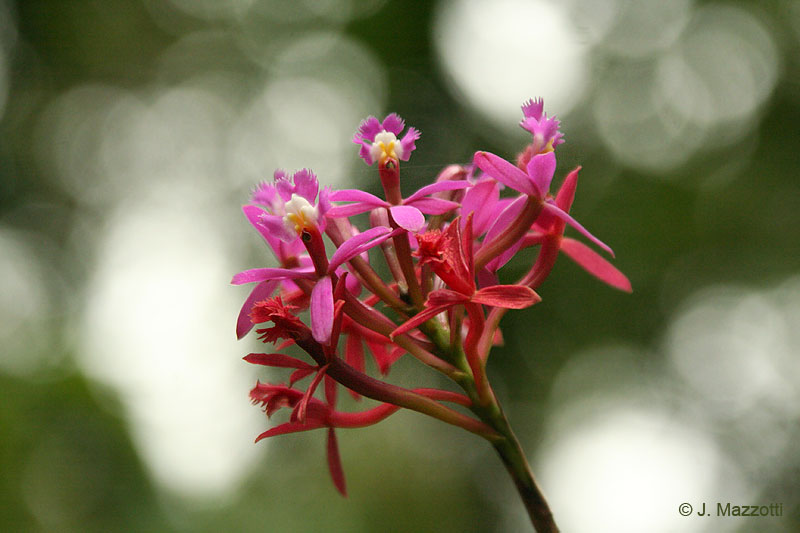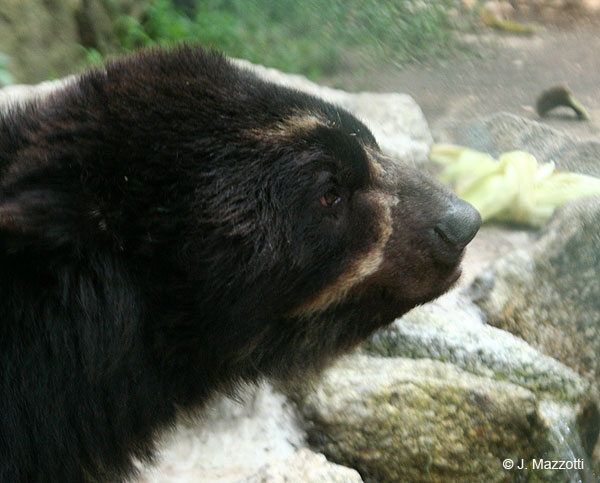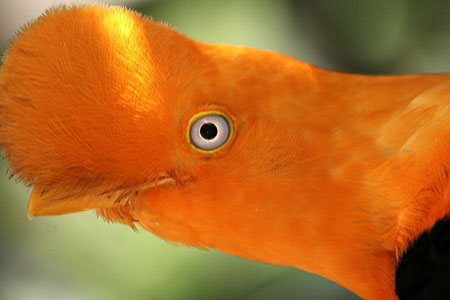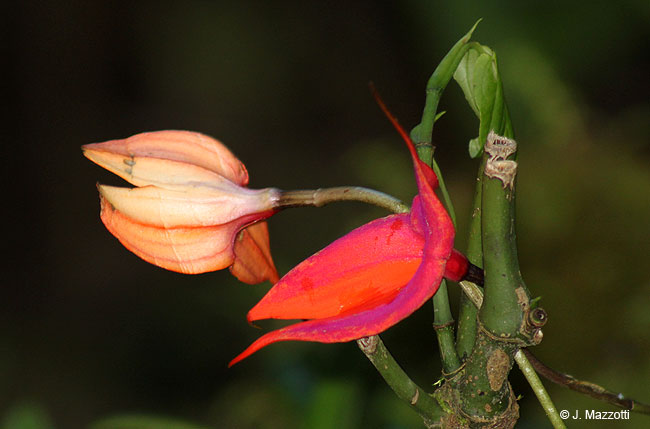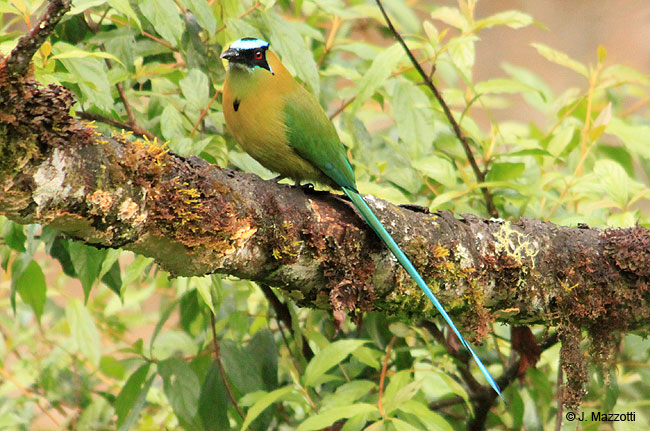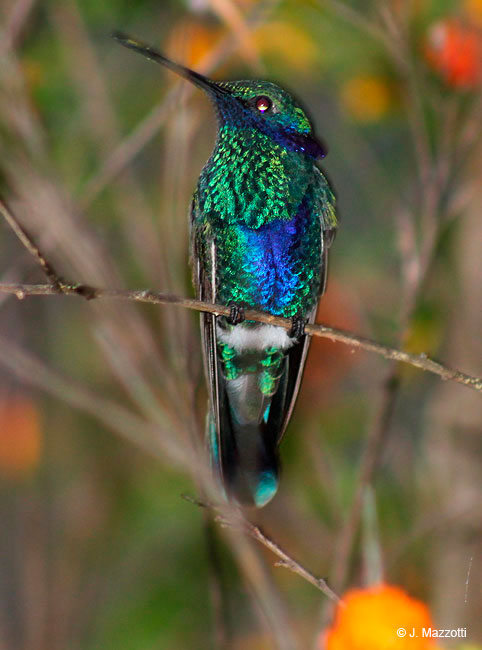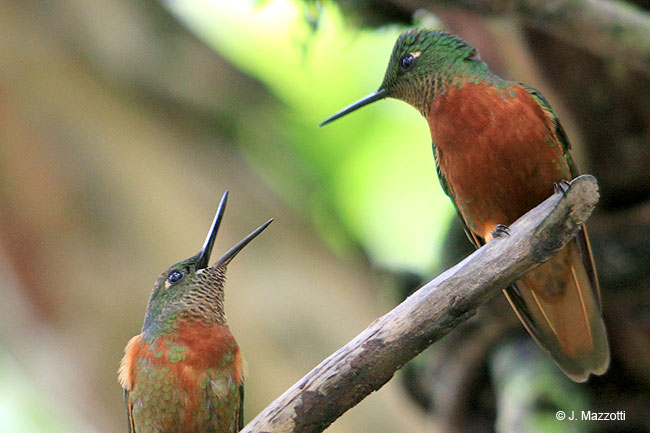Historic Sanctuary of Machu Picchu

 The Historic Sanctuary of Machu Picchu was created in January 1981, for protect endangered species such as the spectacled bear (Tremarctos ornatus) and the cock of the rock (Rupicula peruviana) and the archaeological remains, it has 32,592 hectares, located in Urubamba province in Cusco deparment.
The Historic Sanctuary of Machu Picchu was created in January 1981, for protect endangered species such as the spectacled bear (Tremarctos ornatus) and the cock of the rock (Rupicula peruviana) and the archaeological remains, it has 32,592 hectares, located in Urubamba province in Cusco deparment.
It is a natural protected area of international repute, well known for the presence of impressive Inca archaeological sites and monuments of great historical and cultural value. However, the sanctuary also has a significant environmental value, with wooded areas, steep mountains and snowy peaks. It is an area of interaction between the Andean and Amazonian domain, and is part of a narrow strip of transition between the two ecosystems. Predominant field rugged terrain and steep slopes.
World Natural and Cultural Heritage Site (UNESCO - 1983)
Embedded within a dramatic landscape at the meeting point between the Peruvian Andes and the Amazon Basin, the Historic Sanctuary of Machu Picchu is among the greatest artistic, architectural and land use achievements anywhere and the most significant tangible legacy of the Inca civilization. Recognized for outstanding cultural and natural values, the mixed World Heritage property covers 32,592 hectares of mountain slopes, peaks and valleys surrounding its heart, the spectacular archaeological monument of “La Ciudadela” (the Citadel) at more than 2,400 meters above sea level. Built in the fifteenth century Machu Picchu was abandoned when the Inca Empire was conquered by the Spaniards in the sixteenth century. It was not until 1911 that the archaeological complex was made known to the outside world.
The approximately 200 structures making up this outstanding religious, ceremonial, astronomical and agricultural centre are set on a steep ridge, crisscrossed by stone terraces. Following a rigorous plan the city is divided into a lower and upper part, separating the farming from residential areas, with a large square between the two. To this day, many of Machu Picchu’s mysteries remain unresolved, including the exact role it may have played in the Incas’ sophisticated understanding of astronomy and domestication of wild plant species.
Physical Features of Historic Sanctuary of Machu Picchu
The site lies in the Selva Alta zone, and includes part of a highly dissected mountain massif of the high Andes plateau, which rises steeply from the Urubamba River valley. The area around the ruins of Machu Picchu consists of many rocky pinnacles with exposures supporting thin soils, although the area also includes sites with complex systems of old Inca terraced land constructed to conserve the soils. The Urubamba alluvial basin is an almost continuous zone of arable and pastoral farming land. Geologically the area is very complex, being a combination of marine sedimentary rocks of the Cretaceous-Tertiary period and intrusive volcanic material, including lavas and granites. The sedimentary deposits include Ordovician schists, slates and quartzite. Streams and rivers feed the major Rio Urubamba valley system as well as a number of smaller valleys in the north such as that of Quillabamba (MAA, 1986).
Climate of Historic Sanctuary of Machu Picchu
The annual temperature averages 16°C and annual rainfall is between 1,500 mm and 3000 mm at low altitudes. At 2,500 m altitude the average temperature drops to 10.2°C, and annual rainfall is 2,170 mm. The dry season lasts from May to September and the wet season from October to April.
Flore of Historic Sanctuary of Machu Picchu
The site has been influenced by man for many centuries, leading to a combination of man-made habitats, paramo grassland, Polylepis thickets, partially degraded virgin forest and former cultivated land which has reverted back to forest or scrub. At lower altitudes, patches of woodland predominate, their extent being dependant upon past human interference, especially during the Inca period. The vegetation rises from the dry subtropical forest along the river valleys to the very humid low montane forest. Trees represented in the denser woodland include locally endangered mahogany Swietenia macrophylla and species of the following genera; Ceder, Podocarpus (the only conifer in Peru), Lauraceae Ocotea, Cunoniaceae Weinmannia, Nectandra and Cecropia. A number of tree ferns are present, including Cyathea sp. and also palms such as Geromoina sp., Guasca sp. and Riupala sp. (MAA, 1981). Reeds Phragmites sp., willow and alder occur around rivers and streams, whilst open grassland, low shrubs and scattered thickets of Polylepis sp. and bamboo are found close to the ruins (Parker et al, 1982). The high altitude subalpine paramo includes many Graminae, Festuca sp., Stipa sp. and Puya sp. such as P. raimondii (I). The mountain ridges are characterised by bamboo Gaudua sp. (Parker et al., 1982).
Fauna of Historic Sanctuary of Machu Picchu
Mammals include otter (Lutra longicaudis), dwarf brocket deer (Mazama chunyii), long-tailed weasel (Mustela frenata), Pampas cat (Felis colocolo) and ocelot (Felis pardalis). One of the most threatened species found within the area is spectacled bear (Tremarctos ornatus) (V) (Jorgenson, 1982). The bird community includes Andean condor (Vultur gryphus) and Andean cock-of-the-rock (Rupicola peruviana). Low altitude areas and agricultural fields are characterised by the presence of mountain caracaras (Phalcobaenus megalopterus) and Andean lapwing (Vanellus resplendus), whilst red-backed hawk (Buteo polysoma), American kestrel (Falco sparverius), speckled teal (Anas flavirostris) and Andean gull (Larus serranus). Torrent duck (Merganetta armata), white-capped dipper (Cinclus leucocephalus) and fasciated tiger-heron (Tigrisoma lineatum) are found in narrow stream valleys are associated with riverside trees. Species around the ruins include black-tailed trainbearer (Lesbia victoriae), white-winged black-tyrant (Knipolegus aterrimus), tufted tit tyrant (Anairetes alpinus), cinereous conebill (Conirostrum cinereum), blue-capped tanager (Thraupis cyanocephala) and rufous-collared sparrow (Zonotrichia capensis). In addition, a new species of wren Thryothorus has been observed in the bamboo thickets (Parker et al., 1982). Snakes such as Boa sp. are present and there are numerous lizards and frogs in the damper areas. See birdwatching in Cusco.
Cultural Heritage
The park was established to protect the landscape of the renowned Machu Picchu Inca City, archaeological site, founded by the Inca culture. It is thought that it was a royal Inca residence and was perhaps the centre for collecting coca from surrounding plantations. The site eventually fell into ruin, was covered by the encroaching forest, and 'lost to science' until re-discovery in 1911. There are also the remains of the Inca Way in the area, and local legends, including that of the spectacled bear, which is thought to serve as a messenger between the spirits of the high elevations and those of the jungle (Anon, 1981)
Archaeological Sites inside the Historic Sanctuary of Machu Picchu
Machu Picchu Inca City, Inca Raq'ay, lntiwatana, Intipata, Choquesuysuy, Chachabamba, Wiñay Wayna, Phuyupatamarca, Sayacmarka, Runkurraq'ay, Wayllabamba, Torontoy, Waynaq'ente, Machuqente, Q'ente, Qoriwayrachiwa, Pulpituyoc, Patallacta y Palccay
Local Human Population
Much of the park area is settled with many small campesino communities and farms especially on the lower slopes. The original inhabitants were skilled in irrigation and built terraces and drainage which extend long distances across irregular ground. Agriculture (maize and barley) and livestock grazing (llamas, cattle and sheep) are the dominant economic activities and occur in over 20,000 ha. of the park. The local economy is also supported by tourists visiting the Inca ruins (MAA, 1981; Peyton, 1983). The nearby city of Cusco was the Inca capital and still remains an important town with over 105,000 inhabitants. It is the administrative and commercial centre for a considerable part of the Urubamba basin (INRENA, pers. comm., 1995).
Visitors and Visitor Facilities in Historic Sanctuary of Machu Picchu
In the mid 1980s, some 180,000 people annually visited the Inca Trail and the ruins. More recently, the figure has risen to 300,000, including 7,000 on the Inca trails (Ferreyros, 1988). In Machu Picchu Town accommodation includes a hotel and camping facilities. A museum exists at the ruins and there are plans to develop the area further for tourism.
Conservation Value
This urban creation of the Inca Empire, which appears to have been naturally cut in the continuous rock escarpment, is an area of outstanding natural beauty which encompasses patches of high altitude habitats and associated wildlife. The site also harbours populations of the threatened spectacled bear.






